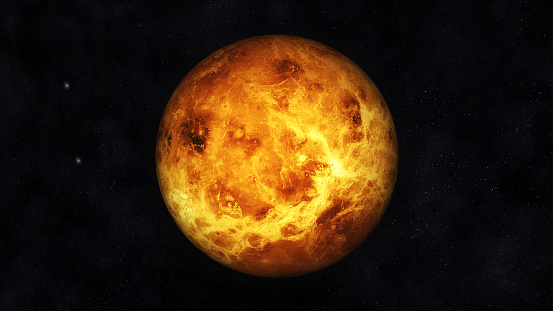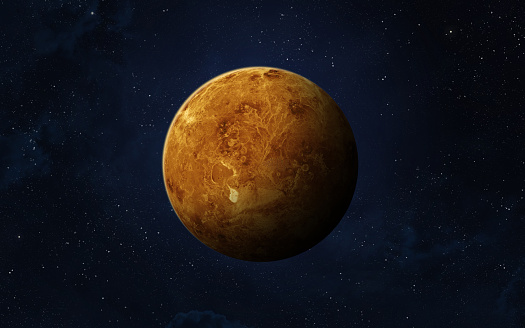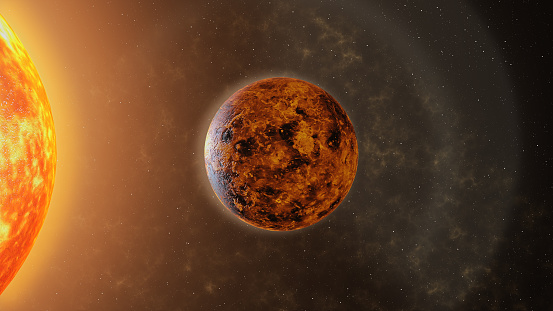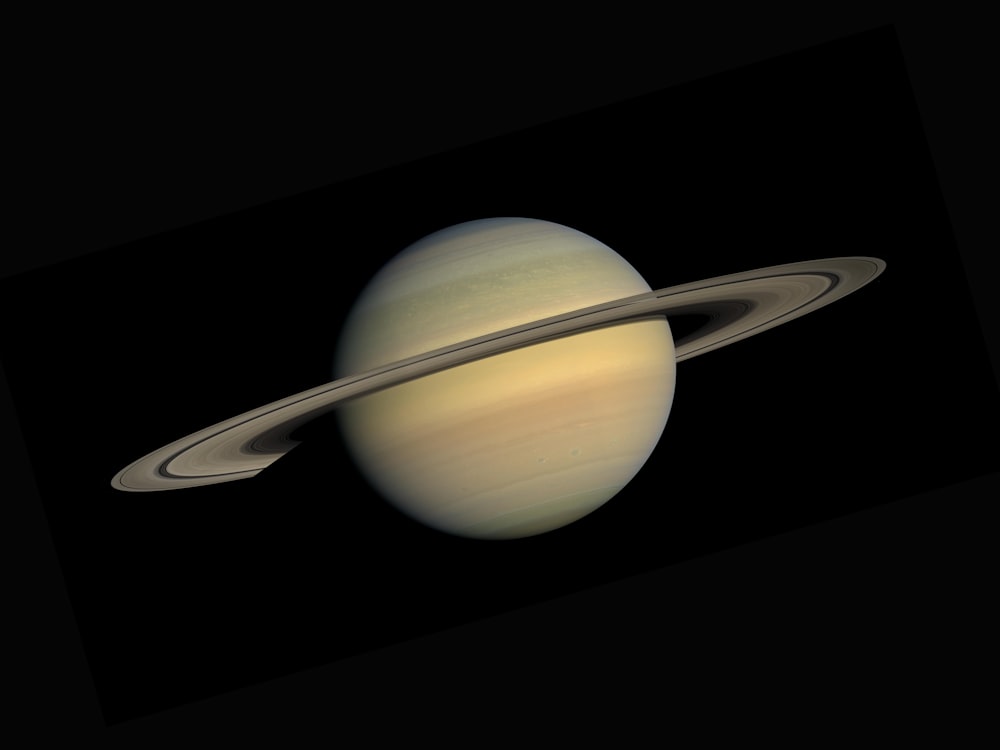Venus: Interesting facts you must know
The second planet from the sun and closest planetary neighbour to Earth, Venus, is peculiar in many respects. The scorching, hellish planet revolves backward and may contain life within its impenetrable clouds.
It is frequently referred to as “Earth’s twin” since the two planets are comparable in size and density and are the sixth largest in the solar system. So don’t be deceived; although appearing to be similar, they are drastically dissimilar in practically every other way.
Venus has days that are longer than a year.
Venus takes longer to complete one rotation on its axis than it does to complete one orbit around the Sun. Just 224.7 Earth days are needed to complete an orbit around the Sun, which is the shortest orbital period of any planet in the Solar System at 243 Earth days.
Venus is hotter than Mercury

IMAGE CREDITS: istockphoto.com
Although being further from the Sun than Mercury, 462°C is the mean temperature there. This is due to Venus’ atmosphere having a high carbon dioxide concentration, which has a strong greenhouse effect. The planet’s temperature is substantially higher than its closeness to the Sun would imply due to heat being held in the atmosphere like a blanket.
Venus’ axis rotates in a clockwise direction.
All other planets orbit the Sun in an anticlockwise path and rotate anticlockwise on their axes. Despite having an odd axis rotation due to being upside down after being pushed off its upright posture earlier in its history, Venus also circles the Sun anticlockwise. According to astronomers, Venus was tilted so far from its original position by a collision with another celestial body that it is now upside down. The only other planet that rotates strangely is Uranus, which spins on its side due to an earlier impact that likely caused it.
The bright Venus
After the Moon, Venus is the second-brightest natural object in the night sky. Venus’ atmosphere, which is reflective and shiny due to the Sulphur acid clouds, blocks our view of its surface. Its brightness makes it visible even during the day – if it’s clear and you know where to look.
The earliest discovery
Although Venus is visible to the unaided eye, it is impossible to pinpoint the person who discovered the planet. Venus was the first planet whose motions were mapped across the sky as early as the second millennium BC. The uncommon Venus transit, in which the planet seems to cross in front of the Sun, has also allowed us to track Venus’ travels over the years.
Clunky etymology
Often, we pronounce Venerian as “Venusian.” According to the standards of Latin, we should use the adjective “venerean” to characterize anything having to do with Venus. The word “venereal” is considered to be too near to this. Despite its awkward derivation, the word “Venusian” is more frequently employed.
The historical Venus
IMAGE CREDITS: Unsplash.com
Venus research dates back to 1600 BCE with the ancient Babylonians. They observed multiple planets and stars as they moved. The earliest known astronomical record is a 21-year-old Venus journal kept in Babylonia. Ancient civilizations like the Mayans and Greeks all had significant representations of Venus in their mythologies. The Roman goddess of love and beauty is where the term “Venus” originates.
Venus pressurizes
The intense pressures on the surface of Venus are just one of many factors that make walking about their intolerable. A pressure created by the atmosphere that is nearly 90 times greater than that on Earth is comparable to the pressure found around 0.6 miles (one kilometer) beneath the surface of the ocean.
Venus is like Earth
Venus is extremely similar to Earth when compared just on the basis of its physical characteristics. They are about the same in size and density, have comparable compositions, and appear to have relatively new surfaces that are encircled by a cloudy atmosphere. But, it’s important to note that the majority of Venus’ clouds contain sulfuric acid, which isn’t something you want falling on you!
Phases of Venus
Venus goes through various phases, just like the moon. Every nine and a half months or so, Venus switches from being a “morning star” to a “evening star” as it revolves around the sun within Earth’s orbit. It fluctuates between various illumination percentages during this time, which is a characteristic that everyone typically associated with the moon.
Rarity of ‘transits’

IMAGE CREDITS: istockphoto.com
One of the two planets that revolve around the sun in Earth’s orbit is Venus. These two planets, together with Mercury, can occasionally pass in front of the sun, casting shadows that occasionally travel across the sun over the course of hours. These trips are called “transits,” and Venus is known to make them in pairs, with more than a century separating them. This makes it an extremely unusual occurrence.
It’s a king-size oven
Venus is the sun’s hottest planet, hotter even than Mercury’s dayside, which reaches temperatures of 801 degrees Fahrenheit (427 degrees Celsius). Venus’ dense, carbon dioxide-rich atmosphere effectively retains the heat, resulting in surface temperatures greater than 880 degrees Fahrenheit (470 degrees C).
Many volcanoes
In addition to having the most volcanoes on its surface of any planet in the solar system, it has a hellish appearance. There are 1,500 active volcanoes known to exist on Earth, while Mars is most renowned for having Olympus Mons, the biggest volcano in the solar system. But even excluding the lesser ones or any that haven’t yet been discovered, it has around 1,600 large volcanoes that are known to exist.
Venus has no moon

IMAGE CREDITS: istockphoto.com
Our solar system’s only planets without their own moons are Venus and Mercury. Mercury’s lack of a moon is somewhat more reasonable. Given that any candidates would be adversely affected by its close proximity to the sun. And that it is even smaller than some of the known moons, such as Jupiter’s Ganymede and Saturn’s Titan. The explanation for its’ lack of a moon, according to some academics, is more complex.
USEFUL LINKS:
Know about more Venus:
Interesting facts about Venus
See predictions in the field of physics:
Biggest predictions in the field of physics
Universe is quite scary, know more:
Scary universe which will blow your mind





